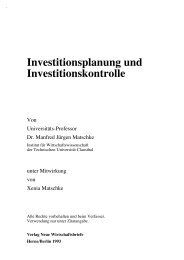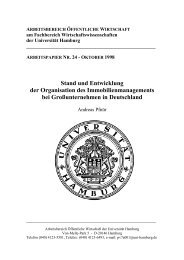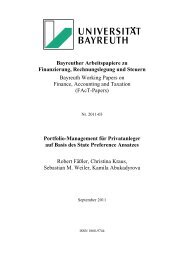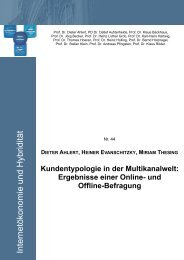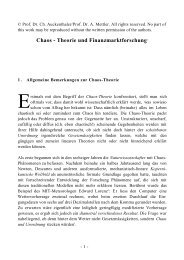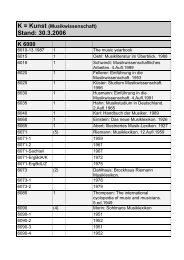FRANCE The
FRANCE The
FRANCE The
You also want an ePaper? Increase the reach of your titles
YUMPU automatically turns print PDFs into web optimized ePapers that Google loves.
6. Conclusions<br />
With regard to keeping older workers in work, three recent<br />
legislative measures have been taken in Luxembourg.<br />
<strong>The</strong> law of 28 June 2002, changing the provisions of the general and<br />
special pension regimes; creating an allowance to offset missing<br />
pension contributions during child-rearing years; and modifying the<br />
modified law of 29 April 1999 creating a right to a guaranteed<br />
minimum income;<br />
<strong>The</strong> law of 22 July 2002 modifying and complementing (a) the<br />
modified law of 22 June 1963 setting the numerical value of civil<br />
Netherlands<br />
1. Introduction<br />
Older workers have become a very important issue in the<br />
Netherlands over the past decade. <strong>The</strong> main concern lies with the<br />
labour market participation and employability of these workers. It is<br />
generally acknowledged that in our ageing society labour market<br />
participation rates of the elderly need to increase further in view of<br />
the significant ageing of the Dutch population, due to rising life<br />
expectancies and the relatively large size of post-war cohorts (socalled<br />
baby boomers) and lower fertility rates. Now 22 out of every<br />
100 persons of the population are 65 years or older. <strong>The</strong> figure for<br />
2040 will be 43. After 2040 the share of older persons will slightly<br />
decrease towards 40 out of 100 in 2050. <strong>The</strong> process of ageing<br />
results in growing claims on social benefits and facilities. In order to<br />
guarantee the preservation of the welfare state, and also in order to<br />
cope with the tightness of the labour market, increased labour<br />
market participation rates are deemed essential. This conclusion<br />
was only recently confirmed in a report (Zorgen voor morgen, Caring<br />
for tomorrow 1 ) by the Committee on the National Pension Debate<br />
which also stresses that the Dutch pension system is solid, seen from<br />
a comparative perspective.<br />
As reported in the Dutch NAP 2002, Dutch efforts to increase<br />
labour market participation rates have not been unsuccessful. <strong>The</strong><br />
net participation rate is 73%, which places the Netherlands among<br />
the best performing Member States. <strong>The</strong> targets agreed in Lisbon<br />
have already been met (using EU indicators), with the exception of<br />
the targets for the elderly. Although progress can be observed over<br />
the years (i.e. since 1993) 2 , participation rates among persons<br />
between 55 and 65 are still lagging behind: about a third of this<br />
group is in employment. <strong>The</strong> (long term) goal set by the<br />
Government is to have 50% of the older workers in employment (in<br />
line with the Stockholm target). <strong>The</strong> Government aims at increasing<br />
participation rates in this group by 3.4% per annum. For this<br />
purpose a number of policy measures have been developed and<br />
announced. <strong>The</strong>se will be discussed in section 3 of this article.<br />
Indications from Statistics Netherlands (CBS) show that the figures<br />
for 2001 fell ? percentage point short of the Government’s objective.<br />
Generally it is acknowledged that low participation rates among<br />
older persons are generation-dependant, i.e. it is assumed that<br />
Spring 2003 | European Employment Observatory Review 127<br />
Trends<br />
servants’ remuneration, together with the modalities of<br />
implementation of the law of 22 June 1963 determining the payment<br />
regime for civil servants, and (b) the law of 21 December 2001<br />
relating to the State Budget for Receipts and Expenditure in the year<br />
2002;<br />
<strong>The</strong> law of 25 July 2002 relating to incapacity for work and reemployment.<br />
We should also point out, as another significant advance, the study<br />
carried out by CEPS/INSTEAD on the theme of older workers.<br />
Franz Clement<br />
Table 1<br />
Total employment rate — Employed persons aged 15-64<br />
as a share of the total population of the same age group<br />
1990 1995 2000 2001<br />
EU-15 62.2* 60.1 63.4 64.1<br />
NL 61.5 64.7 72.9 74.1<br />
Employment rate — Employed women aged 15-64 as a share<br />
of the total female population of the same age group<br />
1990 1995 2000 2001<br />
EU-15 50.2* 60.1 63.4 64.1<br />
NL 61.5 64.7 72.9 74.1<br />
Total employment rate of older workers — Employed persons aged<br />
55-64 as a share of the total population of the same age group<br />
1990 1995 2000 2001<br />
EU-15 37* 36 37.8 38.8<br />
NL 29.6 29.3 38.2 39.6<br />
Employment rate of older workers — Employed women aged 55-64<br />
as a share of the total female population of the same age group<br />
1990 1995 2000 2001<br />
EU-15 23.9* 25.3 28 29.1<br />
NL 15.6 18.4 26.1 28<br />
Source: Eurostat, Labour Force Survey<br />
1 Published 18 December 2002<br />
2 <strong>The</strong> increase of labour market participation by older persons is also observed in OSA’s 2001 Labour Supply Trend Report (based on panel data). <strong>The</strong> increase was most<br />
significant within the category 55-65 years of age. In 2000 half of this group was in employment, as compared to 44% two years earlier. Labour market participation<br />
also increased within the group of 60-65 years old: from 11% in 1998 to 16% in 2000.



